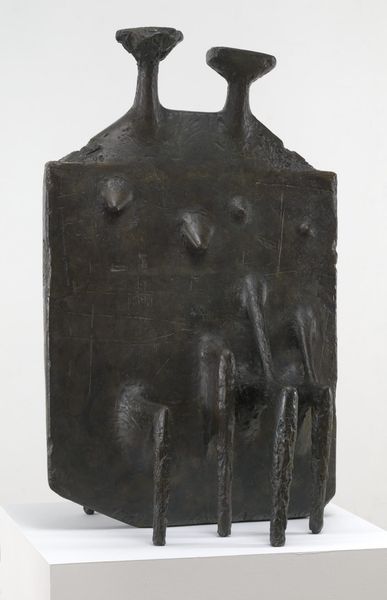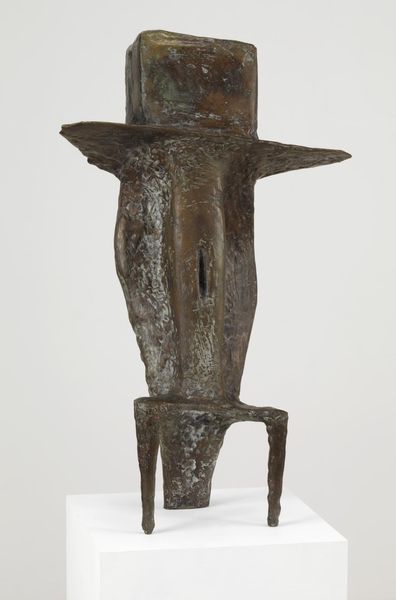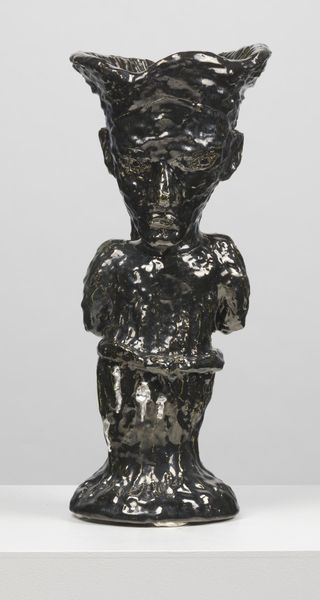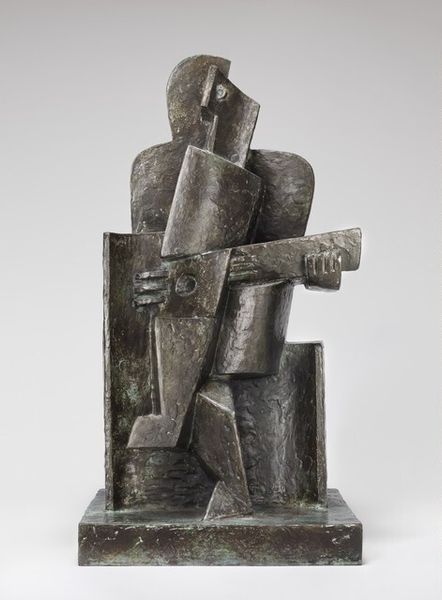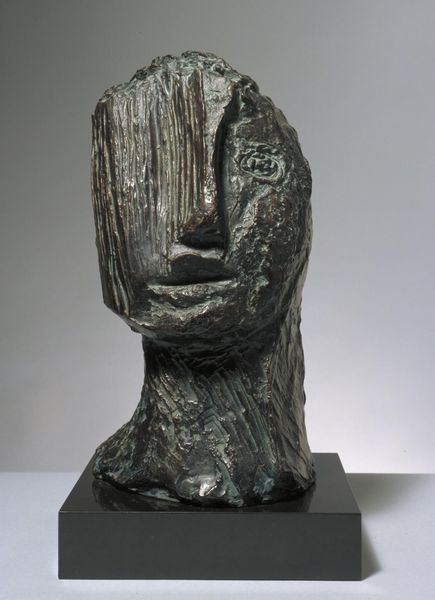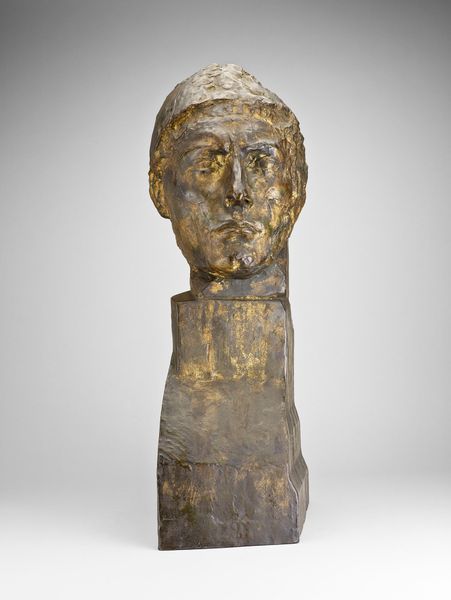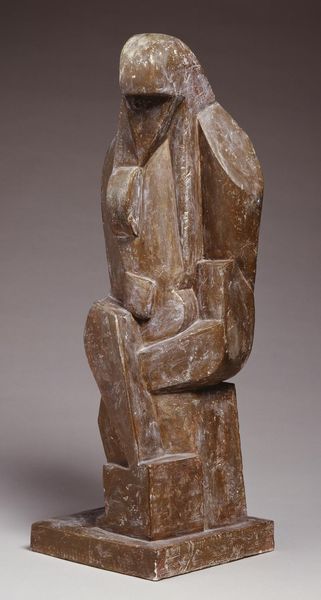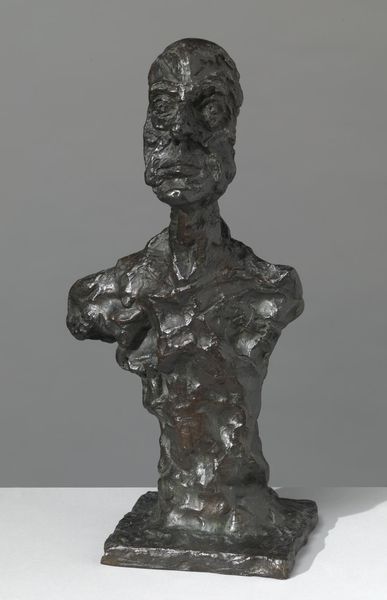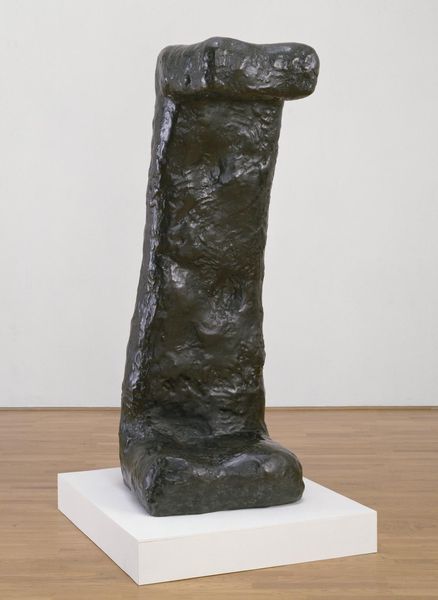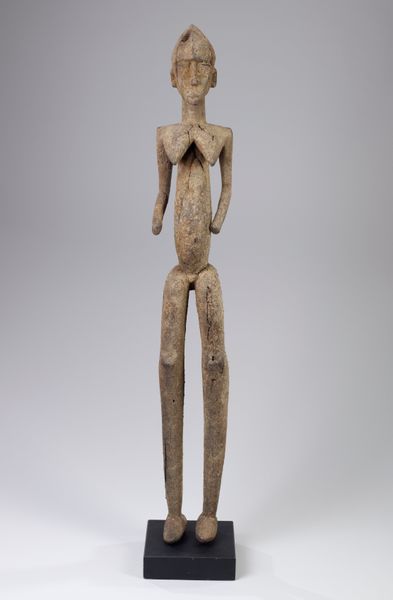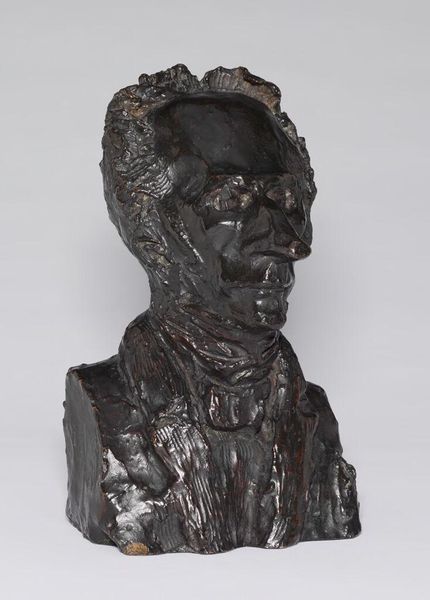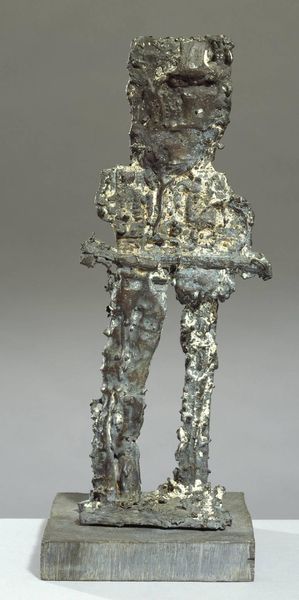
Dimensions: object: 600 x 251 x 311 mm
Copyright: © The Kenneth Armitage Foundation | CC-BY-NC-ND 4.0 DEED, Photo: Tate
Editor: This is Kenneth Armitage’s bronze sculpture, Seated Woman with Square Head, Version B. It strikes me as quite stoic, almost monumental in its stillness. What do you see in this piece? Curator: I see a figure grappling with the weight of societal expectations. Armitage, having witnessed the impact of war, often explored themes of resilience and the human condition. Consider the "square head" – is it a symbol of rigid roles imposed upon women? Editor: That's interesting. So, are you suggesting that the sculpture is a critique of those roles? Curator: It could be. The seated posture, usually associated with passivity, is juxtaposed with the strong, geometric form, creating a tension. Does this resonate with contemporary conversations about gender and power? Editor: It definitely makes me think about the constraints women still face. Thanks, that was insightful. Curator: Absolutely. Art allows us to unpack these layers, making the past relevant to our present struggles.
Comments
tate 6 months ago
⋮
http://www.tate.org.uk/art/artworks/armitage-seated-woman-with-square-head-version-b-t03708
Join the conversation
Join millions of artists and users on Artera today and experience the ultimate creative platform.
tate 6 months ago
⋮
This is the last of four sculptures of seated women made by Armitage during 1954 and 1955. This particular version has a vertical line cut into the torso of the figure which emphasises its geometric, block-like appearance. Armitage was one of a number of younger sculptors, including for example Reg Butler, William Turnbull and Lynn Chadwick, who after the Second World War rejected the traditional idea of sculpture as monumental and harmonious. When shown at the Venice Biennale in 1952, Herbert Read dubbed their spiky, fragmented forms the 'geometry of fear'. Their sculptures often suggested aggressive creatures, half human, half animal. Gallery label, August 2004
